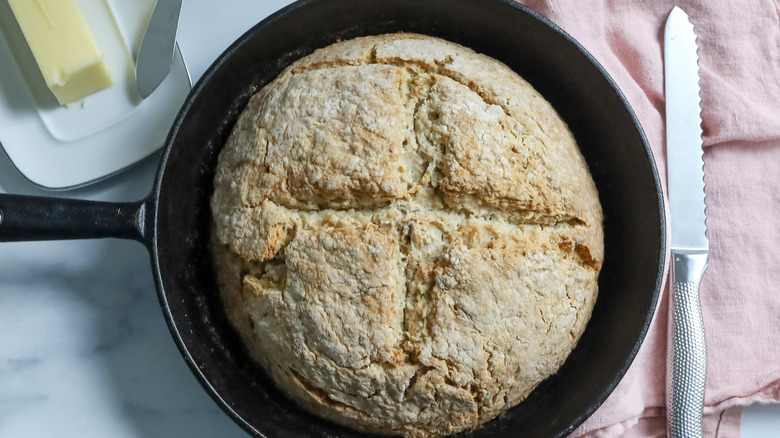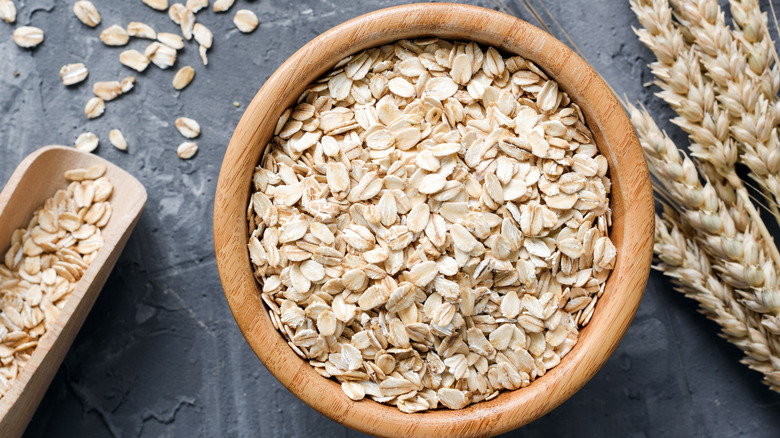The Key Ingredient Tip To Remember When Baking Oatmeal Bread
If you love bread but desire a change from the same old texture and flavor of regular wheat flour, then try oatmeal bread. This baked treat is hearty and substantial with a nice chew to it. It's perfect for making simple toast, sandwiches, or even as the base for a complete meal served with a delicious meat stew or baked beans. But to make a great oatmeal bread, you need to choose the right type of oats first.
There are several types of oats, with the three main categories being: Quick oats (aka instant oats), old-fashioned (aka rolled oats), and steel-cut (aka pinhead oats). Steel-cut is the least processed kind with limited absorption ability and is, therefore, not commonly used in baking. That leaves us with the first two types. The one recommended for baking oatmeal bread is old-fashioned oats.
The difference between instant oats and old-fashioned oats is how they're processed. Both of these oats are usually steamed and rolled into flat flakes, but the instant variety is rolled much thinner than the old-fashioned. As a result, old-fashioned oats tend to preserve more of their texture and flavor hence they create a much fuller consistency. This is why oatmeal bread (made using old-fashioned oats) has that distinct bite that sets it apart from regular loaves made of purely all-purpose or white flour. Instant oats tend to be mushy with a more subtle flavor and because they hold less water would make a too-sticky dough.
How to use old-fashioned oats to bake oatmeal bread
Preparing oatmeal bread follows the same basic process as making regular bread. The only additional step is adding the oats. You can do this in one of two ways. The most popular method is soaking the oats in the liquid ingredients before adding them to the dough. This gives the rolled grain time to absorb some of the liquid and meld flavors. Additionally, the oats soften and become much easier to mix in the dough. Thanks to the structure of the old-fashioned oats, they retain their shape and robust flavor even after the soak.
The other technique to incorporate oats into your loaf involves grinding them into oat flour using a blender or a food processor. With this approach, bakers can either make an oatmeal loaf that's part oat flour and part wheat flour (like our honey oatmeal soda bread recipe) or use the oat flour exclusively. These two recipes will produce different loaves in the end.
The oat-flour-only version will be much denser and less airy since it lacks the gluten component of wheat which is necessary for the dough to rise. This pure-oats bread is ideal for people who are gluten intolerant. On the other hand, the loaf with a mix of oats and wheat flour will have a balanced consistency that's airy but with a slight chew from the oats.
If this has inspired an oaty interest, check out our 13 outstanding oatmeal recipes for more recipes.

